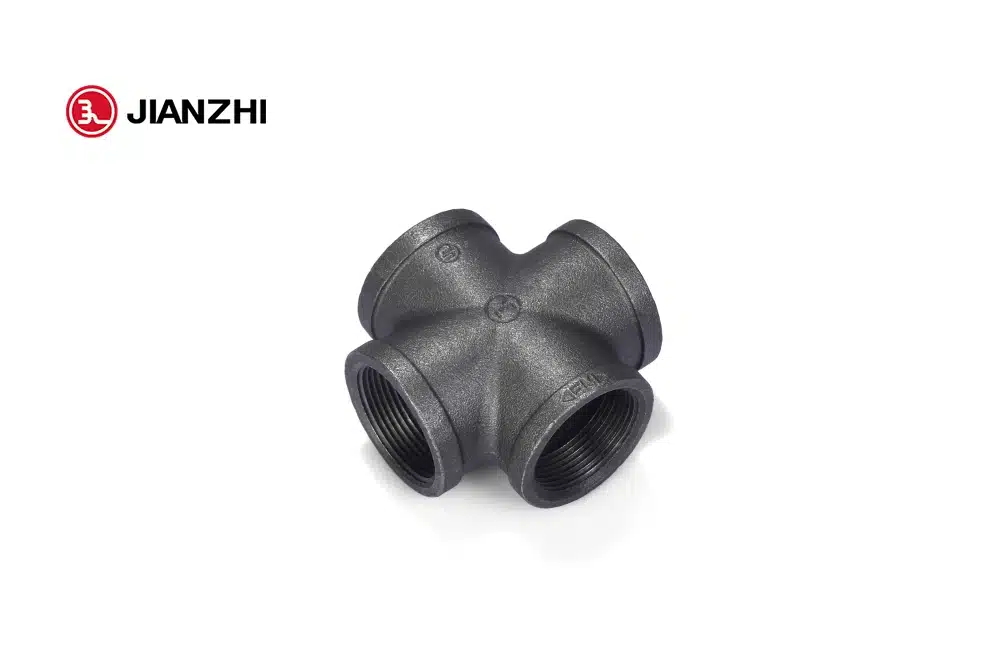Plumbing codes and regulations can vary depending on your location, as they are typically established by local or national governing bodies. It’s important to consult the specific plumbing codes applicable to your area and project.
However, I can mention some general considerations when installing cross tee fittings:
Permitting: In many jurisdictions, plumbing work, including the installation of cross tee fittings, requires a permit. Before starting any plumbing project, check with your local building department to determine if a permit is required and what the associated regulations are.
Material and Listing: Cross tee fittings should be made of materials approved for plumbing applications, such as PVC, CPVC, or metal alloys. Ensure that the fittings you choose comply with the approved standards and carry the necessary certifications or listings.
Sizing and Capacity: Cross tee fittings must be sized appropriately for the pipes they are connecting. Follow the guidelines provided by plumbing codes or consult with a professional to ensure that the fittings are adequately sized to handle the anticipated flow rates and pressure conditions.
Joint and Connection Methods: The installation of cross tee fittings should adhere to the approved joint and connection methods specified by plumbing codes. For example, threaded fittings may require the use of appropriate sealants or tape, while solvent weld fittings may require specific solvent cements and primers.
Support and Alignment: Proper support and alignment of cross tee fittings are crucial to prevent stress on the pipes and ensure a secure installation. Follow the guidelines provided by plumbing codes regarding support spacing and alignment requirements.
Accessibility: Accessibility requirements may apply to plumbing installations, including cross tee fittings. Codes often specify minimum clearances or access points for maintenance and repairs. Ensure that the fittings are installed in a manner that allows for easy access when needed.
Remember, these are general considerations, and it’s crucial to consult the plumbing codes and regulations specific to your location. Local building departments, plumbing professionals, cross tee pipe fitting or licensed plumbers can provide you with the most accurate and up-to-date information regarding the installation of cross tee fittings in your area.
What are some common materials used for cross tee fittings in plumbing applications?
Cross tee fittings in plumbing applications are available in various materials, each offering different properties and suitability for specific purposes.
Here are some commonly used materials for cross tee fittings:
PVC (Polyvinyl Chloride): PVC cross tee fittings are widely used in plumbing systems. They are lightweight, easy to install, and resistant to corrosion, chemicals, and most types of fluids. PVC fittings are commonly used in residential and commercial applications for water supply, drainage, and irrigation systems.
CPVC (Chlorinated Polyvinyl Chloride): CPVC cross tee fittings are similar to PVC fittings but are specifically designed for hot water applications. CPVC fittings can withstand higher temperatures compared to PVC and are commonly used in residential and commercial plumbing systems for hot water supply lines.
Copper: Copper cross tee fittings are commonly used in plumbing systems, particularly for water supply lines. Copper is durable, corrosion-resistant, and can handle high temperatures and pressures. Copper fittings are often soldered or brazed for a secure connection.
Brass: Brass cross tee fittings are known for their durability, strength, and resistance to corrosion. Brass fittings are commonly used in residential and commercial plumbing systems, particularly for water supply lines, thanks to their reliability and ease of installation. They can be found in both threaded and compression connection types.
Stainless Steel: Stainless steel cross tee fittings are highly durable and resistant to rust and corrosion. They are commonly used in industrial and commercial plumbing applications, especially in environments where corrosion resistance is critical, such as chemical processing plants or marine installations.
Ductile Iron: Ductile iron cross tee fittings are known for their strength and durability. They are commonly used in large-scale plumbing systems, such as municipal water supply networks or industrial applications where high strength and pressure ratings are required.
These are just some of the common materials used for cross tee fittings in plumbing applications. The choice of material depends on factors such as the specific plumbing system requirements, the type of fluid being transported, the temperature and pressure conditions, and local building codes and regulations. It’s important to consider these factors and consult with plumbing professionals to ensure the appropriate material is selected for your plumbing system.
